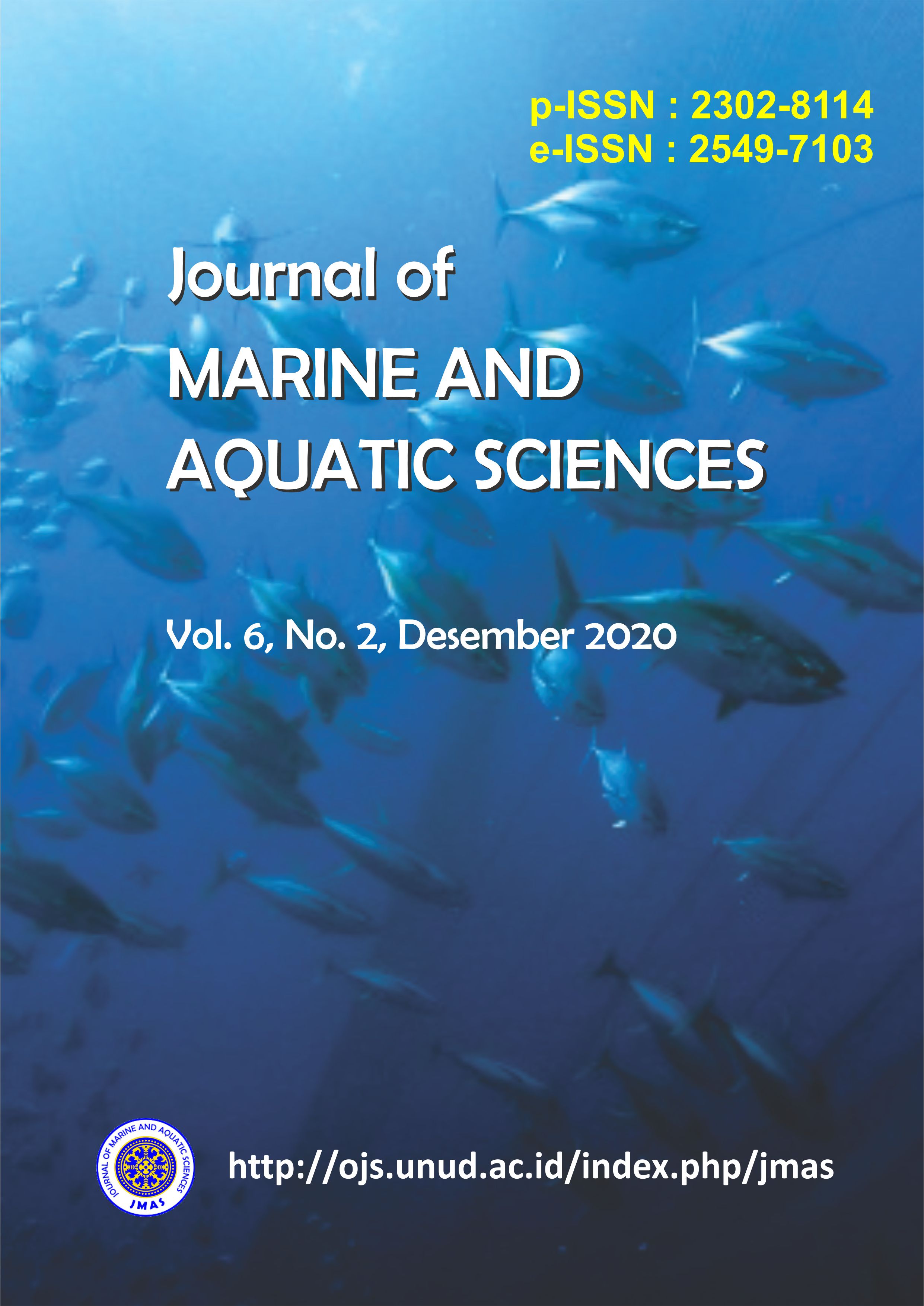Percampuran Turbulen Di Tenggara Samudera Hindia Saat Siklon Tropis Marcus Menggunakan Data ARGO Float
Abstract
Tropical cyclones are a phenomenon that occurs because of the interaction between oceans and atmospheric circulation. The southeastern Indian Ocean is one of the areas that has a high activity of tropical cyclones. Tropical cyclones that cross waters can result in mixing of water masses. The mixing process produces water mass entrainment between lower and upper layers which decreases temperature in the upper layer. The purpose of this study was to estimate the strength of turbulent mixing caused by tropical cyclones using Argo Float data. The result of this study shows the turbulent mixing caused by tropical cyclones was very strong in the surface layer. Turbulent mixing is not found before the cyclone and increases when the cyclone occurs. The increase in turbulent mixing was recorded at a depth of 50 m which had an energy dissipation value ranging from 6.86x10-8 - 1.93x10-4 W/Kg and a turbulent mixing value with a range of 1.0x10-3 - 2.51x10-1 m2 s-1. This study concluded that the turbulent mixing in the surface layer is caused by tropical cyclones which is the main factor triggering the increase in the dissipation of kinetic and turbulent energy at the sites.
Downloads

This work is licensed under a Creative Commons Attribution 3.0 International License.
Copyright 2012 - 2023 Journal of Marine and Aquatic Sciences (JMAS)
Published by Fakultas Kelautan dan Perikanan Universitas Udayana, Denpasar, Bali, Indonesia
JMAS (p-ISSN 2302-8114; e-ISSN 2549-7103)


